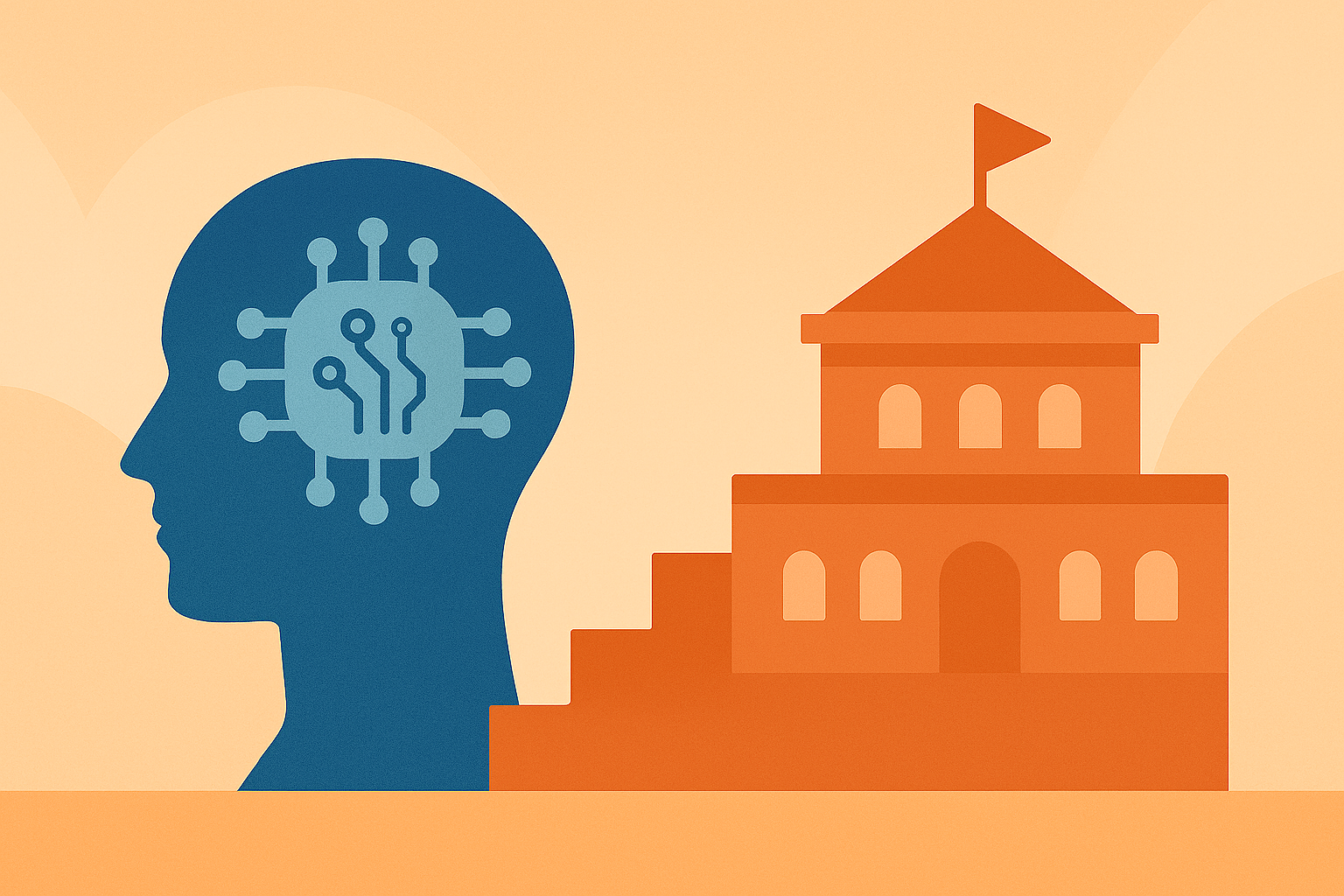I had the pleasure of speaking at BUILA 2025 about AI in Higher Education alongside some brilliant minds from across the sector. What I appreciated about it was that it was an honest, practical conversation, less about hype and more about how universities can start using AI in meaningful, human ways.
One stat from the live session really stuck with me: 10% of attendees said they’d never used AI at all. Later, I was chatting to someone who said they’d tried ChatGPT once but still weren’t sure how it could help their team. And I realised that they are far from alone.
In a survey we ran with our partner institutions earlier this year, we found that:
- Over 60% of teams said a lack of confidence and skills was the biggest barrier to adopting AI
- Bias and compliance concerns were top of mind for many
- While most see AI as an opportunity to improve efficiency and free up staff time, fewer than 20% have a clear implementation roadmap
So, where should you start if this feels overwhelming?
1. Use AI to remove bias, not reinforce it
The loudest stories about AI are often negative, biased algorithms, flawed data, or nightmare use cases from other industries. But in higher education, we’ve got a chance to do it differently.
Take interviews. Humans are brilliant, but we’re also human. If you’ve done 30 in a day, the 30th student doesn’t get the same energy as the first. AI doesn’t get tired. It doesn’t know if it’s Monday or Friday. And if you strip out identifiers like names or nationalities, you can remove the bias we sometimes unconsciously bring into the process.
2. Start small, daily AI habits that I believe work
If you’re in the 10% who’ve barely touched AI, don’t start by trying to “rebuild admissions with AI.” Start with things that save minutes, not months:
- Drafting routine emails in ChatGPT and refine them yourself
- Use AI to summarise meeting notes or policy docs
- Run quick “what if” scenarios for admissions data
Small, safe wins build confidence, and from there, you can start looking at bigger, operational use cases.
3 things to try this week
- Ask AI to draft a first pass of your next student comms email, then edit it
- Paste a recent report into an AI tool and ask it to summarise it in 5 bullet points
- Brainstorm interview questions for agents or staff training with AI and adapt them for your context
None of these will transform your university overnight, but they’ll help you see what’s possible.
3. Remember: AI frees you to be more human
One of the biggest misconceptions about AI is that it will make higher ed less human. Whilst I think in reality, it’s the opposite.
Right now, university teams are drowning in admin, processing applications, answering the same queries, ticking compliance boxes. AI can clear that clutter, giving you back the time for conversations that matter.
And that’s the point: AI doesn’t replace people. It creates space for them.
4. The bottom line
AI isn’t the end of the job. It’s the end of the boring bits of the job.
If there’s one thing I wanted the room at BUILA to take away, it’s this: the universities that thrive won’t be the ones that “automate everything.” They’ll be the ones that use AI to make their work more human.
Start small. Experiment. Learn. And above all, remember that the most powerful thing AI can give you isn’t a machine that thinks.
It’s the time to think, and to connect, yourself.
